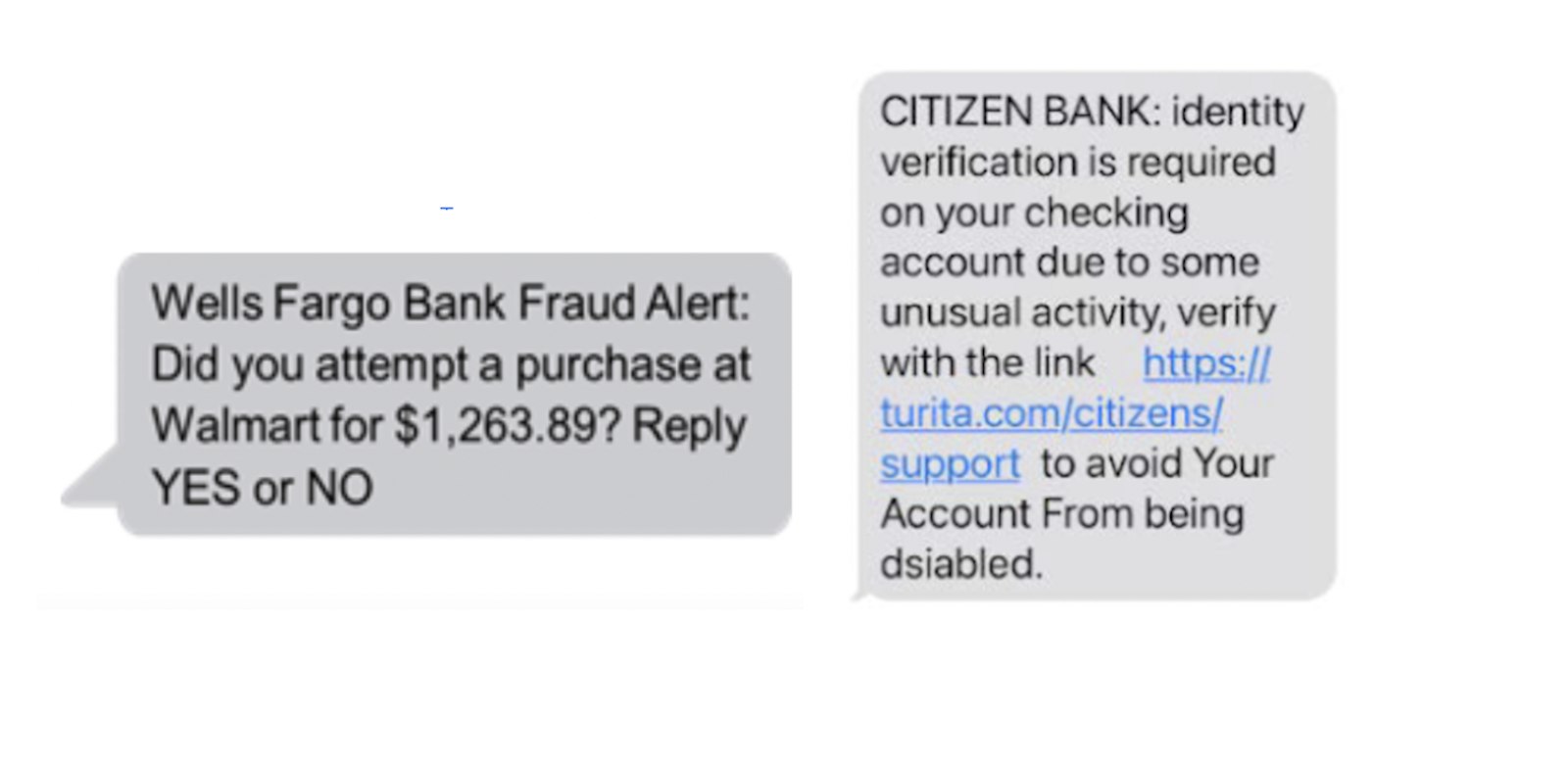
Detecting an SMS spam: 7 proven ways to recognize a fake text message
SMS is super convenient, quick, and easy giving you instant access to any information and updates, but just like anything great it has its risks. Sometimes third parties can scheme and send fake text messages which can be a real headache. In this article we’ll show you how to spot those sneaky fake texts and share tips on how to avoid any trouble they might cause with a little know-how you can keep enjoying the perks of SMS without worry!
What is a Fake SMS?

A fake message is an SMS communication that is designed to fool consumers into sending confidential data or conducting financial transactions. It usually comes from scammers and often takes the form of official entities or authority. Given the widespread use of mobile phones, SMS scams present a lucrative opportunity for fraudsters, with reports suggesting $330 million lost in 2022 alone, as reported by the Federal Trade Commission (FTC).
Scammers frequently pose as reliable sources and send fake SMS to fool individuals into disclosing personal information or money through text messages on cell phones. We advise you to verify the sender's identity, avoid clicking on unfamiliar links, take measures to block unauthorized messages and monitor your phones for suspicious activity.
Giving in to these texts may result in:
- Identity theft
- Financial loss
- Malware infections
- Spyware being installed
It’s critical to exercise caution and refrain from opening dubious links or sending private information to unknown individuals.
7 signs of a fake SMS
1. Spelling or grammatical errors

Identifying scammers through grammatical errors can be a reliable tactic. Scammers often overlook grammar and spelling resulting in obvious mistakes in their messages.
Some common things to look out for:
- Glaring spelling errors
- Typos
- Grammar issues
- Sentence structure issues
However, with the advancement of generative AI, scammers are becoming more adept at concealing their weak writing skills as reported by CBNC in February 2024. Consequently solely relying on language flaws may not always suffice in identifying fake texts. It's essential to remain vigilant and scrutinize other aspects of unusual messages such as the sender’s authenticity and the credibility of the information provided. Combining these strategies can help users better safeguard themselves against potential scams and fraudulent activities.
2. Typo in the website URL

One way to spot a fake text is by checking for typos in the website URL provided. Legitimate companies usually ensure the accuracy of their website URLs when contacting customers. Be wary of URLs that contain misspellings or random characters, as these could be indicators of fraudulent activity. Additionally, be cautious about text messages containing a suspicious link, especially from unknown senders. Pay attention to shortened URLs or links with excessive gibberish, as they may lead to malicious websites. Always verify the authenticity of URLs by visiting the company’s official website directly, rather than clicking on links in unsolicited texts. This simple precaution can help shelter you from falling victim to scams or phishing attempts.
3. It’s unclear who the sender is

Being able to recognise a fake text is essential for internet safety. When the sender’s identity is not made explicit in the message, that’s one cause for concern. If you don’t recognise the sender or the message appears to be from an unsaved number, proceed with caution. Be especially wary of links or attachments in messages from unknown senders, as these could lead to scams, phishing, or the installation of malware.
Additionally, be on the lookout for texts that appear to be fraudulent activity, such as those with strange overseas numbers or blocked caller IDs. It is advisable to stay away from dealing with messages from senders or numbers you are unfamiliar with. Do not click on any links or divulge personal information. To safeguard oneself against possible con artists, remain watchful and believe your gut.
4. Asking for sensitive information

A crucial clue is if the message demands private data, which includes passwords, your social security number, or information about your bank account. Since SMS isn’t a secure communication, legitimate organizations usually won’t ask for such private information. As a result, be suspicious of any text message that requests personal or financial information from you. In particular, requesting financial information ought to raise suspicions because scammers frequently utilize this method to commit fraud. Never send important information by text message in order to be secure, and report any strange texts to the proper authorities.
5. Provide information you never asked for

Being wary of unsolicited information is one way to identify a fake SMS, particularly if it has nothing to do with any recent activities or inquiries you have done. For example, it’s probably a scam if you get an unexpected message posing as an order confirmation for something you didn’t buy. Automated scam messages are often sent to multiple phone numbers, making it crucial to stay vigilant.
Here are some examples of the types of fake text messages you can receive:
- Subscriptions
- Rescheduling delivery fee
- Requests for banking details to verify a fake transaction
- Offers that are too good to be true
- Promotions for free gift cards, prizes, or cash
- Messages promising to help pay off loans or debts
Generally speaking, reputable companies won’t message you to confirm a transaction you didn’t start. Avoid responding to such texts by being cautious and not clicking on any links or giving your personal information. Instead, get in touch with the purported sender immediately via their formal channels to confirm the message’s validity. This method helps protect against becoming a victim of identity theft and phishing scams.
6. Creating unnecessary panic

It's critical to maintain composure and take precautions when you receive unexpected messages that spread fear or offer freebies. Scammers often employ tactics that create a false sense of urgency, pressuring recipients into divulging sensitive information hastily. If you receive a text urging immediate action or promising a freebie out of the blue, take a moment to assess its legitimacy. Be wary if the offer doesn't align with the usual services or promotions of the purported sender, such as a bank offering a free travel package. Reputable companies, after all, don't usually give out free presents to gullible people or ask for sensitive or important information in return. Before acting on such messages, always be skeptical and make sure they are legitimate.
7. Making unbelievably great offers

Spotting fake text messages can sometimes be as simple as recognizing offers that seem too good to be true. If you receive a text promising an unbelievably amazing product or service, it's essential to exercise caution and skepticism. Scammers often use enticing offers to lure unsuspecting individuals into their schemes. Before accepting such offers at face value, take a moment to consider their credibility. Ask yourself if the offer aligns with what you would typically expect from legitimate businesses. Remember, while great deals do exist, anything that seems too good to be true might warrant further investigation to ensure your safety and security.
Staying safe from fake text messages

In the current digital era, protecting oneself from fraudulent SMS messages is essential. It’s critical to respond right away to any suspicious text message in order to safeguard other people as well as yourself. One effective way to do this is to filter and block spam text messages using phone settings, wireless provider tools, and call-blocking apps. Here are some actions that you can do:
- Notify the local authorities regarding the text message: In the United States, you have the option to report ominous text messages to either the Federal Communications Commission (FCC) or the Federal Trade Commission (FTC). They have resources set out specifically to look into and combat fraud.
- If at all possible, never reply right away: The recipient of the suspicious SMS message should not be contacted. Answering can enable scammers to verify the legitimacy of your phone number and result in more unsolicited messages.
- Confirm the sender: Spend a few minutes doing a fast web search to confirm the sender’s identity. Verify whether the information on the official website of the supposed sender—such as your bank—matches that in the text message. Apply the same safety and security practices on your cell phone as you do on your computer.
- Stay away from engaging with random links: By clicking on any links in questionable text messages could take you to phishing or harmful websites. Ensure you have updated security software installed on your smartphone to shield against malware and potential threats.
- Block suspicious senders: Utilize your phone’s blocking feature to prevent further communication from suspicious senders. This helps mitigate the risk of SMS spoofing and protects you from potential scams.
- Consider using third-party tools: Explore third-party applications or services designed to enhance your smartphone’s security. Additionally, utilize built-in spam filters available in messaging apps like Google Messages or iMessage to automatically detect and filter out potential threats.
You can protect yourself and others from becoming victims of fraudulent text message scams by taking these preventative steps.
Conclusion
In conclusion, safeguarding your confidential data and preventing scams require being on the lookout for fake SMS messages. It's important to keep in mind that warning flags for suspicious letters include sloppy writing, ambiguous sender information, sudden requests for confidential details and promises that seem too good to be true. To improve your protection, utilize blocking features and spam filters, stay away from unknown links, report suspicious communications to the authorities immediately, and confirm senders via official channels.
Decision Telecom advises companies to use the Bulk SMS API to guarantee the security and safety of their text message correspondence. You may communicate with your audience with our service without having to worry about falling victim to fraudulent activities since we provide dependable, effective, and secure text messaging solutions. Experience worry-free messaging with Decision Telecom's bulk SMS API by giving it a try today. Contact us using to learn more.


